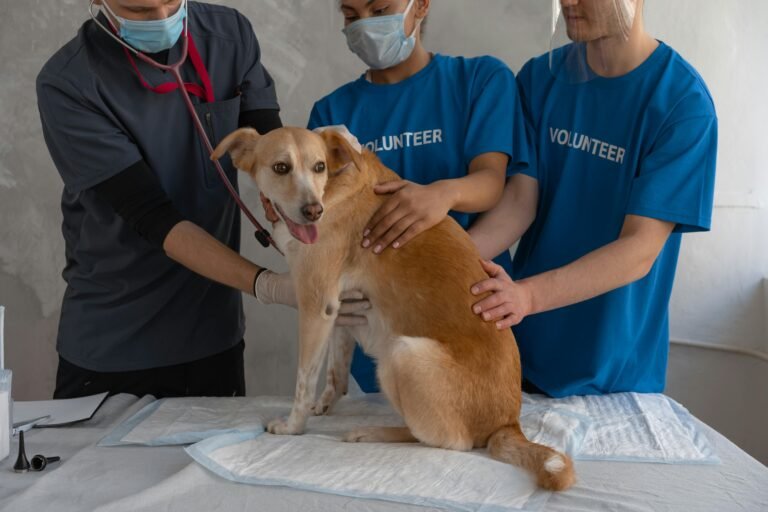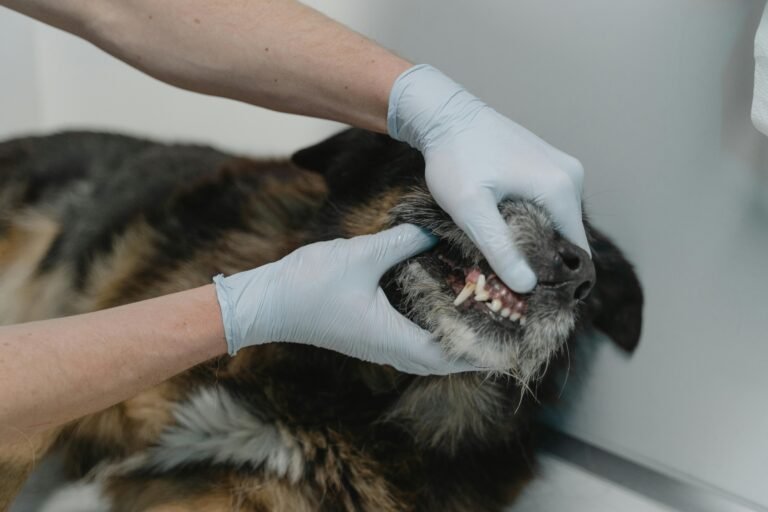Understanding Pet Insurance
Pet insurance is a policy designed to help pet owners manage the financial burden of unexpected veterinary expenses. With the rising costs of veterinary care, many pet owners are turning to insurance as a means of safeguarding their beloved companions’ health and well-being. The primary premise behind pet insurance is similar to that of traditional health insurance; pet owners pay a monthly premium in exchange for coverage that offsets veterinary costs incurred during their pet’s illness or injury.
When looking into pet insurance, it is essential to be aware of the varying types of coverage available. Most policies can be broadly categorized into comprehensive plans, which cover a wide range of services including accidents, illnesses, and preventive care, and accident-only plans, which solely cover emergencies due to accidents. Some insurers also offer wellness add-ons that cater to routine care such as vaccinations and annual check-ups, providing additional peace of mind.
The structure of pet insurance often includes key features such as premiums, deductibles, and co-pays. Premiums are the regular payments pet owners make for their policy, and these can vary based on factors such as the pet’s age, breed, and location. Deductibles are the amount that must be paid out of pocket by the owner before an insurance policy kicks in; once the deductible is met, the insurer typically covers a significant portion of the treatment costs. Co-pays, on the other hand, refer to the percentage of the bill that the owner is responsible for after the deductible is satisfied.
Pet insurance not only alleviates the financial strain from unforeseen circumstances but also allows pet owners to make medical decisions based on their pets’ health needs rather than financial constraints. By securing a pet insurance policy, owners can provide their furry friends with better access to necessary care and treatments without the anxiety of exorbitant costs interfering with their well-being.
The Financial Implications of Pet Healthcare
The increasing costs of veterinary care have become a significant concern for pet owners in recent years. According to the American Pet Products Association (APPA), U.S. pet owners spent approximately $31.4 billion on veterinary care in 2021, reflecting a consistent upward trend in expenses. A routine visit to the veterinarian can cost anywhere from $50 to $150, and this is just the starting point for more serious health issues. Emergency care can be especially financially crippling, with costs ranging from several hundred to several thousand dollars.
For instance, a simple condition such as a urinary tract infection in a dog might incur costs upwards of $300 for diagnosis and treatment. In contrast, more complex scenarios, like major surgeries or critical care, can easily escalate to $5,000 or more. One notable case involved a family whose pet cat developed sudden kidney failure. The treatment needed included hospitalization and dialysis, ultimately totaling over $10,000, forcing the owners to consider financing options for care.
Moreover, the financial burden does not solely arise from unexpected emergencies; regular check-ups, vaccinations, and preventative medications also contribute to yearly budgets. The cost of various treatments can add up significantly, and without adequate planning, many pet owners find themselves financially strained when sudden health issues arise. This is where pet insurance becomes a compelling option. By distributing the costs over time through monthly premiums, insurance can protect pet owners from hefty bills during crises. Hence, incorporating pet insurance into one’s financial strategy is increasingly viewed as a responsible decision to mitigate unpredictable healthcare expenses. In doing so, pet owners can maintain peace of mind regarding their pet’s health without overwhelming financial stress.
Comparison of Pet Insurance Plans
When considering pet insurance, it is essential to evaluate various plans available in the market to find the one that best fits your pet’s needs and your budget. Different pet insurance providers offer a range of plans, often with varying levels of coverage for veterinary services, wellness care, and emergency treatment. The key components of any pet insurance plan include the policy coverage limits, co-payment obligations, and deductible options, which can significantly influence your out-of-pocket expenses.
One of the primary factors to investigate when comparing pet insurance plans is the limitations and exclusions set forth by each policy. Most insurance providers will exclude pre-existing conditions, which can limit coverage for illnesses that your pet may already have. Understanding these exclusions is crucial, as it will help you ascertain whether the policy will provide sufficient protection for your beloved companion. Furthermore, it is advisable to check if there are any waiting periods associated with the plan, which can affect the immediacy of coverage once you enroll.
Customer service ratings and reviews play a critical role in your decision-making process. Researching how quickly a provider handles claims and responds to inquiries can help ensure that you choose a company that values its customers and is prompt in addressing their needs. Reading testimonials from other pet owners can offer valuable insights into the real-world experiences associated with various insurance plans.
Additionally, when evaluating which pet insurance plan might be best suited for your individual needs, consider factors like your pet’s age, breed, and health history. For example, older pets or those with chronic conditions may require more comprehensive coverage. Some providers offer customizable plans that allow you to tailor your coverage options to better suit your specific situation. By taking the time to assess these components, you can make a more informed decision regarding your pet’s insurance.
Common Misconceptions About Pet Insurance
Understanding pet insurance is essential for making informed decisions regarding your animal’s health. Unfortunately, there are several misconceptions that can deter pet owners from considering this valuable financial tool. One common myth is that pet insurance is unnecessary because pets are generally healthy. While many pets lead healthy lives, unexpected accidents and illnesses can occur at any time, making insurance a prudent choice for all pet owners. Just as individuals insure their homes and vehicles for unforeseen events, pet owners should protect their furry companions through adequate coverage.
Frequently, potential policyholders believe that pet insurance does not cover common illnesses, leading to a significant misunderstanding of the product’s capabilities. Most reputable pet insurance providers offer plans that cover a wide range of illnesses, from minor conditions like allergies to more severe ailments such as cancer. It is crucial to read the specifics of each plan, as coverage can vary by provider and breed predispositions. Hence, one should not assume that pet insurance excludes coverage for typical illnesses when, in reality, many competent policies are designed to provide comprehensive protection.
Another misconception is that pet insurance is only beneficial for younger pets. While younger pets often have fewer health issues, they are also susceptible to accidents, particularly during their active play phases. Moreover, acquiring pet insurance while they are young can lead to lower premiums and better coverage options. Conversely, older pets can also benefit significantly from pet insurance, as chronic conditions may arise that require regular veterinary visits and treatments. Ensuring adequate coverage, regardless of age or breed, can help alleviate the financial burden of unexpected medical expenses.
The Benefits of Having Pet Insurance
Pet insurance plays a pivotal role in maintaining the welfare of our beloved animals, offering numerous advantages that can significantly impact pet owners’ lives. One of the primary benefits is the sense of security and peace of mind it provides. Knowing that there is financial support available for unexpected veterinary expenses can alleviate the stress associated with emergencies or complex medical conditions. This reassurance allows pet owners to focus on their pet’s wellbeing rather than worrying about the costs involved.
An important aspect of pet insurance is its potential to enhance access to veterinary care. With insurance coverage, pet owners can seek treatment for their pets without the constraint of cost being a primary concern. This access can be vital when providing necessary treatments or interventions that might otherwise be unaffordable. For instance, pet owners who have insurance may feel more inclined to pursue advanced medical procedures, routine check-ups, or preventive care, ultimately leading to a healthier and happier pet. The broader spectrum of care available means that pets can receive timely medical attention, which can be critical for their wellbeing.
Additionally, pet insurance empowers owners to make informed medical decisions based on their pets’ health needs rather than solely financial limitations. When faced with difficult choices regarding treatment options, having insurance can eliminate the burden of considering the cost. This enables pet owners to prioritize their pet’s welfare, thereby enhancing the bond between owner and pet through better health outcomes. The assurance that one’s pet can receive the best possible care without financial hesitation makes pet insurance an invaluable investment for responsible pet ownership.
Real-Life Stories: The Impact of Having Pet Insurance
Pet ownership comes with numerous joys but also significant responsibilities, particularly when it comes to ensuring the health and well-being of our furry friends. Many pet owners have faced challenging medical emergencies, and the presence of pet insurance has proven to be invaluable during such times. Consider the story of a Labrador Retriever named Max. When Max suddenly developed a severe gastrointestinal condition that required emergency surgery, his owner was overwhelmed with worry and fear. Fortunately, Max’s pet insurance covered a substantial portion of his medical expenses, alleviating much of the financial burden. This support allowed the owner to focus on Max’s recovery rather than the financial distress associated with unexpected veterinary bills.
Similarly, a cat named Luna experienced an acute kidney failure that required immediate hospitalization and treatment. Luna’s owner, who had recently obtained a comprehensive pet insurance plan, found immense relief knowing that her insurance would cover the majority of the costs associated with the urgent care needed. This scenario highlights the impact of pet insurance in not only easing financial anxiety but also facilitating prompt and necessary medical attention for pets in crisis.
These accounts illustrate a common theme among pet owners fortunate enough to have insurance — the peace of mind it provides during distressing circumstances. Rather than delaying essential procedures due to cost concerns, pet owners with insurance can seek immediate attention for their pets without hesitation. The emotional and financial security offered by pet insurance has enabled pet owners to act in the best interests of their animals, often leading to better prognosis and recovery outcomes. Thus, these real-life stories reinforce the significance of investing in pet insurance to safeguard both our beloved pets and our financial well-being.
Choosing the Right Time to Get Pet Insurance
Ensuring your pet is adequately covered by insurance is a critical consideration for pet owners, and timing can significantly impact both the premiums and the coverage options available. One of the most suitable times to enroll in a pet insurance policy is while your pet is still young and healthy. At this stage, they are generally less prone to health issues, making them less likely to have pre-existing conditions that could influence coverage options or premiums.
Age plays a vital role in determining the insurance policy rates. Many insurance providers have age thresholds that may lead to increased premiums as the pet gets older. Additionally, enrolling early often allows for a wider variety of plans to choose from. Younger pets are often seen as lower-risk clients, which can lead to more favorable rates and fewer exclusions in their insurance policy. Conversely, as pets age, they are more susceptible to health problems, and any pre-existing conditions that develop may be excluded from coverage, potentially leaving the owner vulnerable to high vet bills.
Another factor to consider is the specific breed of your pet. Certain breeds are predisposed to specific health issues, so understanding the common health concerns associated with your pet’s breed can help determine the appropriateness of getting insurance sooner rather than later. Researching the average life expectancy of your pet’s breed and any historical health data can offer valuable insights into potential future health risks.
In summary, the earlier you secure pet insurance, the better the chances are of obtaining comprehensive coverage at an affordable rate. By taking into account the age of your pet, breed-related health issues, and the possibility of pre-existing conditions, you can make more informed decisions about the timing of your pet insurance enrollment. This proactive approach ultimately emphasizes the importance of being prepared for any unexpected health challenges that may arise in your pet’s later years.
Tips for Filing Pet Insurance Claims
Filing claims for pet insurance can often be a straightforward process if approached with the right preparation and knowledge. To begin with, it is essential for pet owners to familiarize themselves with the specifics of their coverage. Each insurance provider has unique policies regarding what is covered and the necessary documentation required when submitting a claim. Reviewing these details before a claim is needed can streamline the entire experience.
When a pet receives treatment, it’s critical to obtain detailed invoices from the veterinary clinic. These invoices should clearly itemize the services provided, the cost, and any necessary diagnostic tests that were performed. Additionally, pet owners should request a detailed description of the pet’s condition and the veterinary diagnosis. This information is invaluable, as it supports the claim and provides insight into the nature of the treatment given.
Before submitting a claim, it is recommended to double-check all the documentation to ensure that there are no discrepancies. Many providers require specific forms to be filled out alongside receipts and other documents. Completing these forms accurately can significantly reduce the chances of delays in the claims process. Keeping a well-organized folder, either in physical or digital format, containing all relevant documentation such as medical history, invoices, and claim forms can be beneficial.
Finally, it is advisable to stay in close contact with the pet insurance provider throughout the claim process. If any additional information is needed, being readily accessible can help expedite the review. Furthermore, tracking the claim’s status and maintaining communication will ensure that any issues are resolved promptly, ultimately leading to a more efficient reimbursement process. By following these practices, pet owners can minimize stress and improve their chances of a successful claims experience with their pet insurance provider.
Conclusion: Prioritize Your Pet’s Health and Financial Security
Investing in pet insurance is a critical step in safeguarding both your pet’s health and your financial stability. As discussed throughout this blog post, pet ownership comes with numerous responsibilities, including the financial burden of veterinary care. By securing a pet insurance plan, pet owners can alleviate some of this stress, ensuring they can provide necessary medical treatment without facing prohibitive costs. A small monthly premium can translate into significant savings when unexpected illnesses or accidents arise.
Understanding the various types of coverage available allows pet owners to select a plan that best suits their needs and those of their furry companions. From comprehensive coverage that includes routine care to more focused plans that cover emergencies, having pet insurance can lead to better health outcomes for pets. Moreover, it can also provide peace of mind, knowing that financial constraints are less likely to compromise your pet’s care.
It is essential for pet owners to consider their individual circumstances, including their pets’ age, breed, and any pre-existing conditions that may affect insurance premiums and coverage options. The earlier you enroll your pet in a policy, the greater the chances of avoiding exclusions related to pre-existing health issues. Additionally, fostering a proactive approach to your pet’s health through regular check-ups can lead to early detection and treatment of potential health issues, further justifying the need for a robust insurance plan.
In closing, prioritizing your pet’s health and financial security should be a paramount concern for every pet owner. The peace of mind that comes with knowing you can afford necessary care is invaluable. Taking the time to research and select the right pet insurance can ensure that you and your pet receive the best care possible, solidifying a loving, healthy relationship for years to come.






